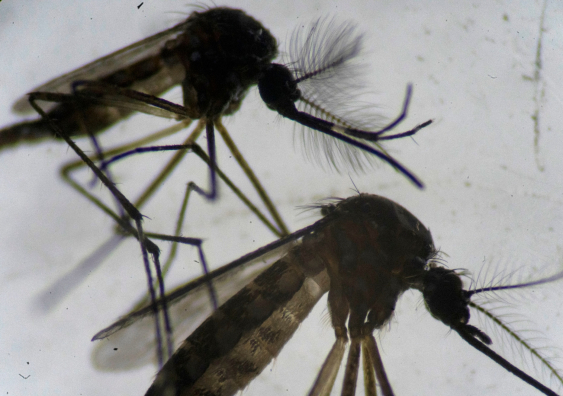'Immune confusion' leads to severe dengue in children: study
Researchers have identified early warning signs for severe dengue fever, which could lead to better diagnosis and treatment.
Researchers have identified early warning signs for severe dengue fever, which could lead to better diagnosis and treatment.

Maddie Massy
UNSW Medicine & Health
+61 2 9348 1936
m.massywestropp@unsw.edu.au
Researchers from UNSW Sydney and Stanford University have shown that dengue virus can disrupt the immune system in children, leading to more severe disease. These changes in the immune system, referred to as ‘immune confusion’, could be used to diagnose at-risk patients and targeted with therapeutics.
The results are in a new study published in Nature Immunology.
Most people infected with dengue virus have no symptoms, or a fever that quickly passes. However, 5 per cent of people progress to severe dengue, which can mean organ failure and even death within days of symptoms appearing. The risk is particularly high for children, who experience the most severe reactions to dengue virus.
Until now, there was little understanding of why some patients have mild dengue, while others progress to serious disease.
“This study is about trying to understand what is going wrong,” says co-senior author Dr Fabio Zanini, who leads the Fabilab at UNSW Medicine & Health.
“What is happening in the immune system of these children that don’t respond well to the infection?”
Dengue virus, which is spread by mosquitoes, infects approximately 400 million people each year. People with dengue fever fill hospitals during the wet season in tropical Africa, Asia and South America, where the disease is endemic.
Dengue virus is not endemic in Australia. However, the main carrier mosquito Aedes aegypti can be found in North Queensland, where small outbreaks have occurred.
Read more: The search for a malaria vaccine
“For the time being, dengue virus is a problem that is mostly affecting tropical and subtropical countries. But the mosquitos that spread dengue virus are also present in parts of Australia, especially in the north of the country,” Dr Zanini says.
“Also, the habitat range of these mosquitoes is expanding over time because of climate change.”
Despite decades of research, there is a single licensed dengue vaccine (Dengvaxia manufactured by Sanofi), with limited uptake due to questions about safety and efficacy. There is also no antiviral treatment to limit a patient’s progression to severe dengue fever.
For this study, the researchers focused on children because they are at higher risk of severe dengue. The study participants were 19 Colombian children who presented to healthcare settings with dengue virus infection in the early stages. Roughly half of this group progressed to severe disease.
Four healthy children who presented for routine checkups or elective procedures were included as a control group.
The researchers analysed blood samples taken from the children on the first day that they presented with dengue. They used a technique called single cell RNA sequencing, which allowed them to study individual immune cells in the blood and how the cells were behaving.
“The question was: if we draw blood samples from patients on day one when they show up at the hospital, and use the most advanced technologies and most sophisticated computational algorithms, can we see early signs of progression to severe dengue?” Dr Zanini says.
Close collaboration was needed between researchers with expertise in immunology and clinical medicine, as well as specialised technical skills to analyse the data. Dr Zanini originally trained as a physicist and obtained a PhD in bioinformatics, now using his expertise in data analytics and computer science in medical research. Co-senior author Professor Shirit Einav from Stanford University is a clinical researcher specialising in infectious diseases.
In the children who progressed to severe dengue disease, the researchers identified three main changes in the immune cells in their blood.
Firstly, they found that antigen presenting cells were behaving differently. Normally, antigen presenting cells take up dengue virus particles, cut them up into smaller pieces, and show these virus fragments to the rest of the body as a warning of infection.
Secondly, B cells became heavily infected with dengue virus and had impaired ability to produce antibodies, which are one of the main weapons of the immune system to fight infections.
“The third element of the puzzle is that certain cells called natural killer cells, and their companions T cells, seem to be in a strange state of quiescence or exhaustion,” Dr Zanini says.
“We expect them to be virus killing machines. Instead, they transform into couch potatoes that watch the action and wonder about whether they should do something or not.”
This immune confusion means that the child’s immune system doesn’t protect them from the virus as it normally would, leading to severe dengue.
By understanding what goes wrong early in dengue virus infection, we can design diagnostic tests to identify which patients are at risk of severe disease.
“Current methods to predict which patients will progress to severe dengue are based on clinical parameters that appear late in the disease course,” says co-author Dr Yike Xie, who completed her PhD at UNSW Medicine & Health, now working at the University of Gothenburg and AstraZeneca.
“These methods are not sensitive and specific. Doctors have to keep most symptomatic patients in hospital and monitor their subsequent disease progression, which uses a lot of medical resources and leads to waste.”
The changes in patients’ immune systems could also be targeted with therapeutics to prevent progression to severe dengue. For example, clinicians could prescribe a drug that reactivates natural killer cells and T cells to fight the infection.
Already, the researchers are continuing their work to better understand the link between immune confusion and severe dengue, using single cell RNA sequencing and other advanced analytical techniques.
“This is a great example of how important is to get scientists with different backgrounds to collaborate in a team effort. It is the teamwork that makes the science emerge,” Dr Zanini says.